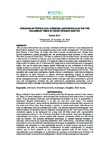Use este identificador para citar ou linkar para este item:
http://www.alice.cnptia.embrapa.br/alice/handle/doc/1019670Registro completo de metadados
| Campo DC | Valor | Idioma |
|---|---|---|
| dc.contributor.author | TEIXEIRA, W. G. | pt_BR |
| dc.date.accessioned | 2015-07-13T11:11:11Z | pt_BR |
| dc.date.available | 2015-07-13T11:11:11Z | pt_BR |
| dc.date.created | 2015-07-13 | pt_BR |
| dc.date.issued | 2015 | pt_BR |
| dc.identifier.citation | In: SIMPÓSIO INTERNACIONAL SOBRE GERENCIAMENTO DE RESÍDUOS AGROPECUÁRIOS E AGROINDUSTRIAIS, 4., 2015, Rio de Janeiro. Anais... Brasília, DF: Embrapa, 2015. | pt_BR |
| dc.identifier.uri | http://www.alice.cnptia.embrapa.br/alice/handle/doc/1019670 | pt_BR |
| dc.description | The process of formation and evolution of distinct anthropic horizons found widespread in Brazil will be reviewed and discussed focusing in the waste management. The Amazonian Dark Earths (Terra Preta de Índio), the shell mounds (sambaquis) and ditches from human earthworks (called geoglifos) are the archeological sites reviewed in this article. The main source of P and Ca in TPI sites is believed to be from the bones. Ashes are also a key source of nutrients in antropic soils and responsible to enhance the pH. Leaves are also a important source of nutrient. TPI owes its name to the dark color originated from a large stocks of carbon and it is believed that large part is preserved because a pyrogenic origin. The use of carbonized organic waste (charcoal) as soil conditioner is now being largely studied in the world, this technology is called biochar. The sambaquis are found mainly along the Brazilian coast with have a large amount of phosphorus and carbon. The geoglifos are constructed earthworks mainly circular or rectangular. Until now is intriguing the absence of dark horizons or clearly chemical signatures typical of anthropic modifications caused by waste accumulation in or near the geoglifos. Understanding the waste management used to create these fertile anthropic soils have possibility to provide new soil management practices for soil reclamation, sustainable production, and to enhance soil carbon storage and nutrient holding capacity therefore to use marginal soils. | pt_BR |
| dc.language.iso | eng | eng |
| dc.rights | openAccess | eng |
| dc.subject | Antrossolo | pt_BR |
| dc.subject | Terra Preta de Índio | pt_BR |
| dc.subject | Sambaquis | pt_BR |
| dc.subject | Geoglifos | pt_BR |
| dc.title | Creation of fertile soil horizons (anthrosols) in the pre columbian times by using organic wastes. | pt_BR |
| dc.type | Artigo em anais e proceedings | pt_BR |
| dc.date.updated | 2016-01-28T11:11:11Z | pt_BR |
| riaa.ainfo.id | 1019670 | pt_BR |
| riaa.ainfo.lastupdate | 2016-01-28 | pt_BR |
| dc.contributor.institution | WENCESLAU GERALDES TEIXEIRA, CNPS. | pt_BR |
| Aparece nas coleções: | Artigo em anais de congresso (CNPS)  | |
Arquivos associados a este item:
| Arquivo | Descrição | Tamanho | Formato | |
|---|---|---|---|---|
| 2015016.pdf | 6.48 MB | Adobe PDF |  Visualizar/Abrir |









